You can't have a sports smartwatch without sacrificing some convenient features. Here's the ULTIMATE sports watch and some in-betweens to consider.

If you are seeking a smartwatch to help enhance your and exercise, then you need a smartwatch that is both a with good features to track your stats, (paired with a reliable ), general and an suite that helps you achieve whatever goals you set.
Good is also very important and should be a major consideration if you are a marathoner or randonneur. Few smartwatches out there will last four hours while using its internal GPS.
A bonus would be a smartwatch with convenient features such as the ability to reply with a custom message, a reliable voice assistant, a touchscreen and preferably one that has the ruggedness of a .
would be delighted to know that smartwatches these days have gone through an arms race to as many vital stats as possible. The unfortunate part about that is that watches released recently just don’t have many super important upgrades from their predecessors. I mean, most smartwatches got the SpO2 (blood oxygen saturation) measurement system last year and it’s honestly not a very important stat to have.
Contents
6
You just can’t go wrong with the 6 if your goal is to have a watch that’s completely amazing in all aspects of , exercise and health.
The features of the 6 is excellent. I think you’ll find the training features to be really good and you will also love the range of activities it can track and the data it can analyze.
Some really cool features on the base model 6 is the VO2Max estimation, ANT+ connectivity, a very long capable of lasting through a marathon and customizable screens while your workouts. The upgraded models of the 6 also introduce offline maps, music and solar charging.
Offline maps is very useful to me because I enjoy exploring new areas. It has been such a godsend to have a map on my wrist that I can use to navigate the woods or the waters, which after a while, become quite indistinguishable.

Polar Grit X
The Polar Grit X is another smartwatch you can consider if the 6 is out of your budget or if you don’t need some of its features.
The Polar Grit X is a smartwatch that is almost all-in with its and exercise feature. Every screen is dedicated to some aspect of your health, for example, while most smartwatches have , the Polar Grit X rates your sleep as it relates to how much exercise you should do on the next day, through its Nightly Recharge function. The Polar Grit X also has the FitSpark function which suggests different workouts daily based on the strength, cardio and recovery categories.
The Polar Grit X is pretty advantageous if you are a runner. The crowning feature of high end Polar watches is that they have a running power estimator which means that you can find out about your improvements in running over time. Adding to that, you can also find out your VO2Max on that watch by just activating a test and relaxing. Amazing.
is also quite good and it will last you throughout a marathon or other event that’s a few hours long.
I do have some gripes with the Polar Grit X, though. Of all the smartwatches out there, it doesn’t help with your productivity. Its touchscreen is quite unresponsive and it has no ability to reply to messages, regardless of whether you are on an Android or .
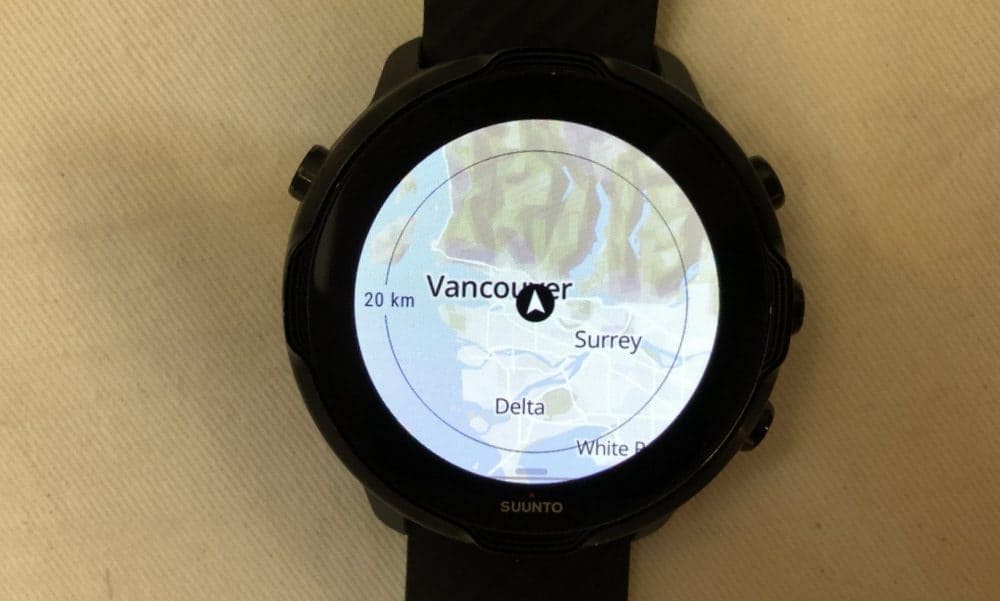
Suunto 7
The Suunto 7 is one of the best balanced smartwatches out there for fitness enthusiasts who also want to be productive on a smartwatch.
I wouldn’t really rank this as a , though, as it has really good features but no SpO2 nor any . At the same time, I really love the Suunto because it can track a lot of workouts and activities from motorsport to paddling to hiking. Plus, it has offline maps which is actually something I really like when I go deep into the woods or water.
The Suunto 7 runs on Google’s Wear OS operating system and therefore has all the productivity features available to a watch. If you are paired to an Android, you will be able to reply to messages. You can’t take calls, though, because the Suunto 7 doesn’t have a speaker (it has a buzzer).
The downside of the Suunto 7 is that it’s might make it through a four-hour but barely anymore than that, unlike most watches in this article.

Fitbit Sense or 3
I really love these two smartwatches. The reason why I like them is because they are very well-rounded smartwatches that really function more like a than a sports .
Let me explain. Some smartwatches like the Suunto 7 and the Polar Grit X is just “sports, sports, sports.” Whereas the Fitbit Sense and Fitbit Versa 3 are more towards “a little sports, a little fitness and a little health.” It’s not as specialized as the first two smartwatches mentioned, but the Fitbit smartwatches are much more useable as a tool to improve your fitness and health.
You can keep track of your sleep, mindfulness, food consumption, steps and exercise. I love the concept of Active Zone Minutes which tells you whether you’re hitting the recommended amount of exercise per week. I find numbers to be very motivating.
Both smartwatches are very comfortable to wear too. I can wear them 24/7 and not notice their presence as compared to some other 24/7 watches like the 6 (which I really hate wearing overnight).
Why I have put these two watches together? That’s because the 3 has many of the features the Fitbit Sense has. The Fitbit Sense just has some more features over the 3.
Productivity-wise, both smartwatches have a voice assistant, can reply to messages and supposedly can take calls. On the topic of voice assistant, the Fitbit Sense and 3 currently have Alexa, but Fitbit says they are going to integrate Google Assistant into these watches. Both watches can reply to messages if you are paired to an Android. Finally, I haven’t been able to take calls on my Fitbit Sense or Fitbit Versa 3, but supposedly Fitbit is rolling out the update.

6
If you are going to buy a smartwatch for your iPhone, then you should just get the Apple Watch Series 6 if you want a watch that’s the best smartwatch for fitness and exercise AND also provides you with a good amount of productivity tools.
Let’s put it this way. This isn’t the absolute best smartwatch for its but being able to reply to messages while you’re in the middle of a hike is pretty useful, especially if your is kept deep within a bag.
The 6 has a very good and new to the 6 is the SpO2 sensor which can track your blood oxygen saturation level. As I stated in the introduction, this is a nice to have feature but it ultimately isn’t very useful for me and I wouldn’t pay extra to get this feature. is OK for most people who don’t do marathons or other events that last hours and hours.
Apple has also released the Apple + feature on the 6 is like a guided trainer that uses your to walk you through one of the many workouts available and then uses your 6 to track data like calorie burn, time and other metrics.
Best Smartwatch for Fitness and Exercise 2020

What makes a good fitness and exercise smartwatch?
For one, it should be rated as water resistant. I think this is a crucial step in creating the perfect outdoors smartwatch. Of course, if you are a gym person, this might not be that important.
But I really wouldn’t buy a smartwatch that doesn’t have this feature. It’s just going to cause problems down the road when you are asked to go kayaking and you can’t take your watch with you.
Luckily, most smartwatches are water resistant so that you can take them out for a swim. There are a few that are not water resistant such as Mobvoi’s Ticwatch Pro and its smaller, entry-level Ticwatch C2 which has a strap that is not suitable for water.
Other than that, I think another important aspect for a fitness and exercise watch is hardiness. Curved glass as available on the Apple Watch Series 5 or the Samsung Galaxy Active2 might seem fantastic but in all honesty, they worry me a bit if you expect hard-surface contact such as when rock climbing.
Then there’s also the consideration on whether you should buy a purpose-made sports smartwatch like the Polar Vantage V or Garmin Fenix 6.
They are honestly great smartwatches, but they come at a great cost. While they have advanced sports features like VO2Max analyzers and a very good heart rate sensor, they also can’t do the many, everyday tasks that even the cheapest Wear OS smartwatch would be able to accomplish such as having a voice assistant or sending custom text message replies.
So, how do we be fair to both segments?

Our pick: Garmin Fenix 6
If your goal is to have the ultimate fitness and exercise smartwatch at all costs, then you need the Garmin Fenix 6.
It really is “at all costs” though, because not only is this smartwatch very costly compared to almost all other smartwatches, it also has major downsides when it comes to convenience.
But why do I like it so much?
I love it because it is the ULTIMATE sports, outdoors and exercise smartwatch. With the reduced human contact lifestyle that we have had to undertake due to the COVID-19 pandemic (I hope it’s over by the time you read this), I have gotten very interested in outdoor activities such as mountain biking, kayking and golfing, and I do them alone. More about how that latter fact makes this watch even better.
My Garmin Fenix 6 is the Sapphire version. Garmin makes a few versions of the Fenix 6.
First off, you get to choose between three watch case sizes — 42mm, 47mm and 51mm. Then ask yourself if you want to pay extra for music, maps and Wi-Fi functionality. How about a scratch-resistant Sapphire lens on the display that promises to be super hardy? Then finally, decide if you want solar recharging.
The cost of the base model with the most blinged-out Fenix 6 is approximately double. You do get a pretty snazzy and high tech watch regardless of what options you choose.

Maps
I want to focus on the maps functionality of the Garmin Fenix 6.
I must say that it’s the most amazing function available on the Fenix 6. It is worth the extra cost for this upgrade.
Why?
As I stated above, I do a lot of sports alone because we’re supposed to reduce contact. As such, sometimes I have to go into unfamiliar territory in order to enjoy the sport.
This means finding biking trails on a map, or finding a navigation route on a kayak.
Having a map on my wrist makes that so much easier. Especially since the Fenix 6 notes where you started off so you can find your way back there by referring to the map.
Now, you might ask — what’s the difference between this map and the Wear OS’s Google Maps?
Well, Google Maps on smartwatches requires an active internet connection. That’s an issue if you keep your smartphone in the car (which supplies the data connection). I do not like to take my smartphone out to sea because it’s a $1,000 device that is denser than water (that is to say: it doesn’t float).
Having an offline map as is the case on the Garmin Fenix 6 is great. I found it very useful when trying to find a beach on an island away from the mainland as well as finding trails that lead me back to my starting point.

Sports data and analysis
The Garmin Fenix 6’s ability to track a large number of sports is not very distinct from other smartwatch platforms. Wear OS’s Google Fit can track over 40 distinct exercises, for example.
But what the Garmin Fenix 6 offers you is superior analysis. The insight you get from the smartwatch’s phone app is just class leading.
For example, while most smartwatches will be able to tell you about your heart rate throughout your exercise, the Garmin Fenix 6 sets itself apart by giving you an analysis on the training effect on your workout including whether it increased your anaerobic or aerobic abilities.
This really gives me the ability to know whether I need to up the intensity of my workout.

Body Battery, Stress, Sleep
When I first reviewed this watch, I really hated wearing this watch to sleep. It’s really big, bulky and puts significant pressure on your arm if you are the type that puts your arm under your pillow.
Over time, I have come to appreciate the pains needed to get a good analysis. If you want a complete understanding of how your day has gone, you will have to wear this watch overnight.
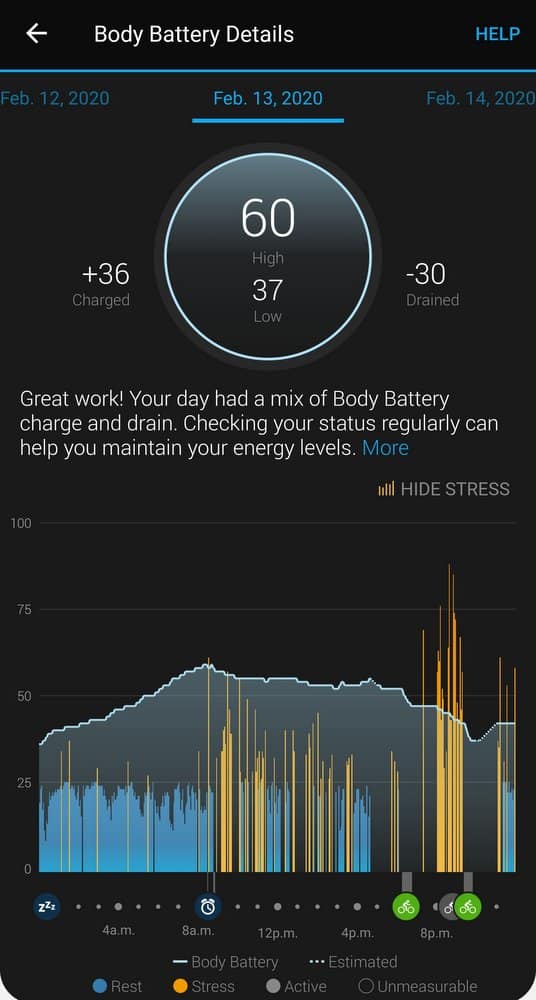
That’s because the Fenix 6 uses your sleep, activities and stress levels to measure how charged or drained your Body Battery is.
Think of the Body Battery as how much energy you have left. After sleeping, you will have a pretty full battery, but after a stressful day or a day with intense exercise, that battery will deplete.
The Garmin Fenix 6 also measures stress based on your heart-rate variability. Garmin’s smartphone app, the Connect, will be able to tell you whether you are low, medium or highly stressed throughout the day.
The Garmin Fenix 6 really sets itself apart with the data that it offers. I’d say no other smartwatch has the same level of analysis.

Training software
If you are a runner, you’d love the package of assistance the Garmin Fenix 6 offers.
One of the best things of the Fenix 6 is its Garmin Coaches that help you come up with a training plan. You tell Garmin what you want to do — 5K, 10K, Half Marathon, and it comes up with a plan based on the methods of three different real-life coaches.
The Garmin Fenix 6 also comes with a Pulse Oximeter which measures the saturation of oxygen in your bloodstream. It does this by using a red LED on the back of the watch. It helps you know whether you are acclimatizing well to high altitudes.
Finally, what I really love is the VO2Max measurement. VO2Max indicates your cardiovascular fitness and it is useful to tell you the amount of improvement
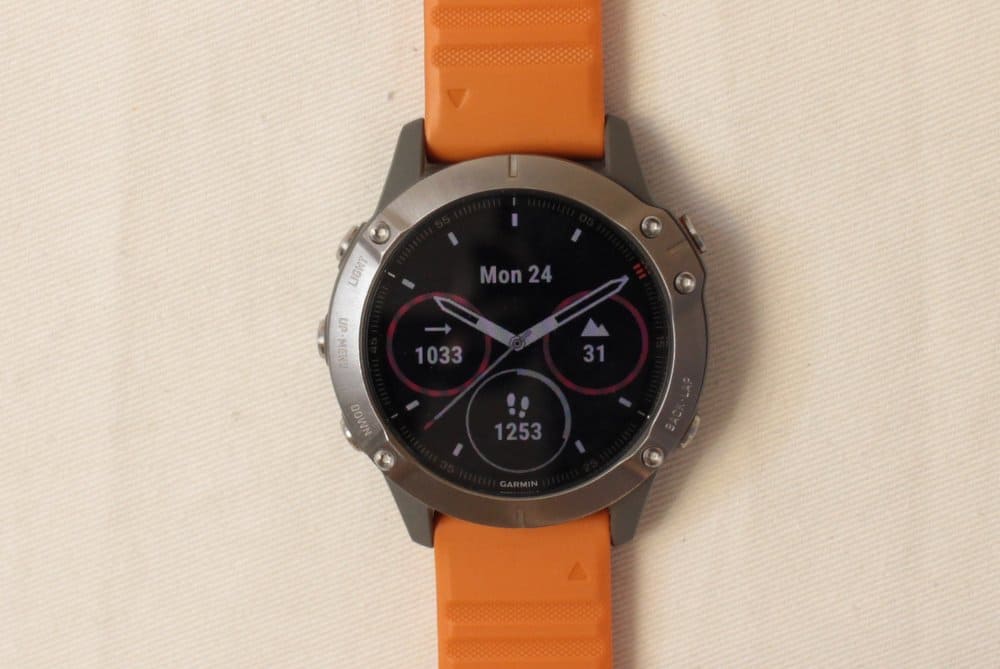
Hardware
The Garmin Fenix 6 is water resistant to 100 metres, which is a major improvement over most smartwatches which only offer water resistance to 50 metres.
I also have the titanium case and the Sapphire glass which makes this watch lighter and hardier.
The smartwatch also comes with an LCD screen that uses ambient light to illuminate the screen. This gives it a really long lifespan. I loved how I could wear this watch for days without needing to charge it. Garmin estimates a 10 day battery life from my usage.
Furthermore, I really liked how its charger was just a cable. What I like about this is that it’s very compact. Whereas most other smartwatches have a dock which is much larger and in the case of wireless charging docks, I learned that it’s not possible to charge while you’re on the move because the watch will get dislodged from the dock.
Runner Up: Suunto 7

A new addition to the line up is the Suunto 7 which is really impressive because it blends fitness, exercise, data analytics and also productivity tools that not even the Garmin Fenix 6 has.
The Suunto 7 is an amazing smartwatch that I thoroughly enjoy wearing.
The screen is a modern, LED screen that is very contrasty and colourful.
The operating system is the ubiquitous Wear OS by Google.
And it has… OFFLINE MAPS.
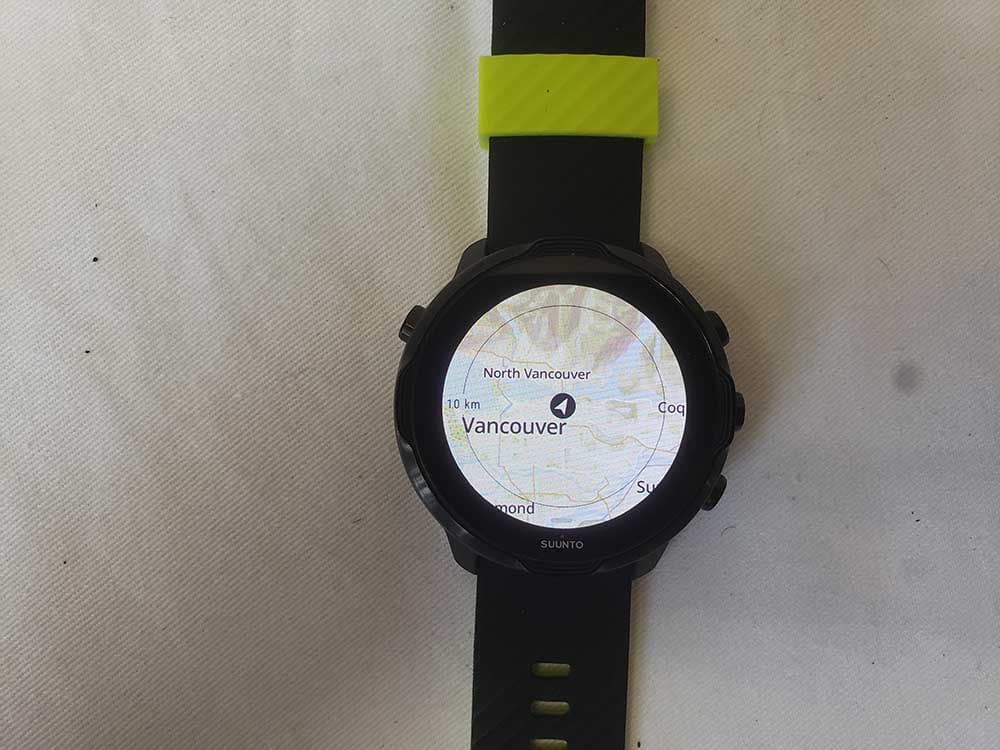
Why I need offline maps
Woah, why the need for all caps?
The sports that I do involve going to places that can honestly look the same after a while.
It’s either a bunch of super old-growth trees arranged in what seems like an orderly grid or a bunch of blue water and a few islands that all look about the same.
A map would be great and I am glad to have one on Google Maps, but it really isn’t that convenient to pull my phone out in the middle of my activity.
An offline map is great because it helps me avoid the inconvenience and I also get a record of where I have been so I can backtrack.
It also allows me to make mental notes of important places.

Workout tracking
The workout tracking functions of the Suunto 7 is very good.
First up, you get over 70 sports modes to track. Even niche sports like motorsports or stand up paddle boarding are included in this list. Nice.
On Fitbits, that was most disappointing. I couldn’t find the right mode to use to track the sports I was doing. So, every exotic workout is just recorded as a “Workout”.

What I like about the Suunto is that it gives you an idea of how intense your workout was through its EPOC and PTE metrics.

The EPOC metric gives you an idea of the intensity of your workout while the PTE gives you a range of how you’re improving (or if you’re overdoing). Then, it gives you a recovery time which instructs you how much to rest.
These features are generally not available on less sophisticated smartwatches.

Productivity
The Suunto 7 is such a good balance between sports and productivity.
That’s because it’s based on the Wear OS — the operating system from Google.
Which means that you get the great benefits of a reliable speech to text system for replying to texts.
And you also get Google Assistant which is the ultimate voice assistant. Google Assistant is very intelligent and will probably understand you more often than not. It can tell you details such as weather, your appointments, do calculations, start timers and search for information. It’s really handy.
Disclaimer: the Garmin Fenix 6 is still the ultimate sports smartwatch
The Fenix 6 is still the ultimate. No doubts there from me.
It can do everything the Suunto 7 can do within the realm of sports and in fact, it’ll do some aspects even better.
It has a better battery life. Perfect for ultramarathoners and randonneurs. The Fenix 6 is the watch to take if you want to swim across the English Channel, not the Suunto 7.
And while you swim from France to England, the Fenix 6 also has excellent maps, so you can confirm you’re seeing Jersey and not New Jersey.
It does lose out on the productivity features, but we’re in an article that’s focused on the best sports smartwatch, right?
The Suunto 7 is a good replacement for the Fitbit Versa 2, reviewed below, but not one that’s meant for super hardcore folks. If you aren’t named after an animal like Tiger (Woods) or Bear (Grylls), you might just be fine with the Suunto 7.

Runner Up: Fitbit Versa 2
The Fitbit Versa 2 is a good alternative to the Garmin Fenix 6 for fitness and exercise enthusiasts.
I felt that I needed to talk about this watch because of its dynamism that’s not found in the Fenix 6.
For one, it’s a lot cheaper than the Fenix 6. It’s also much lighter, smaller and looks more elegant.
It also has a touchscreen with just one button. This contrasts with the Fenix 6 which has five buttons and no touchscreen.
A touchscreen is great because it has become very intuitive for smartphone users. Knowing which button to press on the Garmin Fenix 6 is highly confusing sometimes and it’s all a crapshoot of luck.
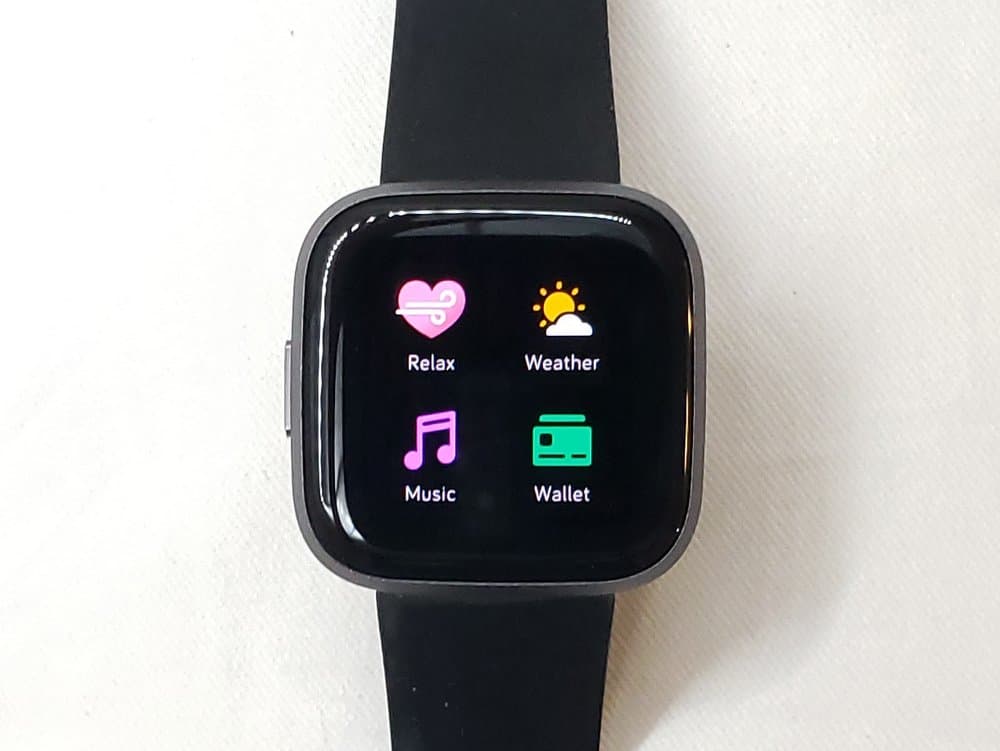
Fitbit offers some parallels to the functionality offered by the Garmin Fenix 6. It can track many exercises and it can give you sleep analysis. Fitbit also offers many workout plans that you can use.
Just so you know, sleep tracking is not available on Wear OS devices nor on the Apple Watch by default. You could install a separate program for it, though.
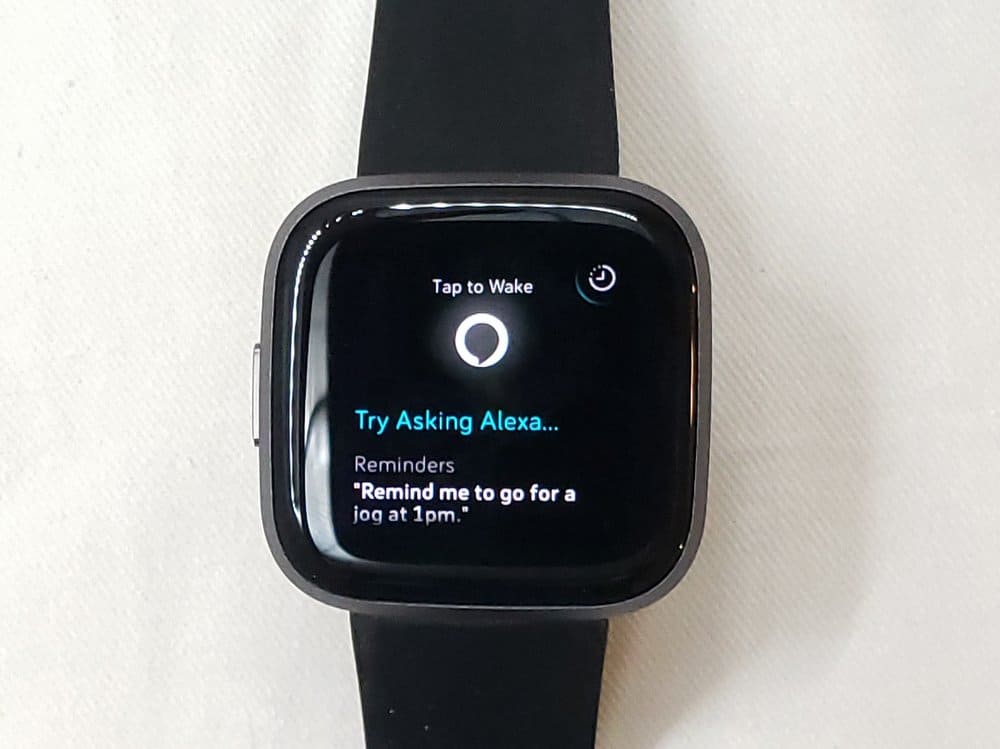
The Fitbit Versa 2 also offers a voice assistant which is not available on the Garmin Fenix 6.
Having a voice assistant is an amazing convenience that I really wished were on the Fenix 6. But serious fitness and exercise smartwatches generally forgo these functionalities.
Having a voice assistant makes tedious tasks easy. Setting a timer on the Fenix 6 is a bit of a pain because it has no touchscreen, so you are forced to press buttons to set the minutes and seconds of your timer.
Whereas with the Fitbit Versa 2’s Alexa, doing this task is much easier because all you have to do is to tell Alexa.

The Fitbit Versa 2 also has a more dynamic text reply system. You can send custom messages on the Versa 2 using the speech-to-text function as long as you are on an Android. This is not available on the Garmin Fenix 6, so you are forced to take out your phone if you want to send something. Inconvenient!
And if you dislike charging your smartwatch every evening, then the Fitbit Versa 2 is a great choice. It doesn’t have the week-long battery life that the Fenix 6 has but it has a few days’ worth even though it has an LED screen which requires backlighting.
It’s long battery life is also helped by not having an integrated GPS. This is a major downside if you care for location data. For example, if I go kayaking without my phone, the Fitbit Versa 2 will not be able to trace my route.
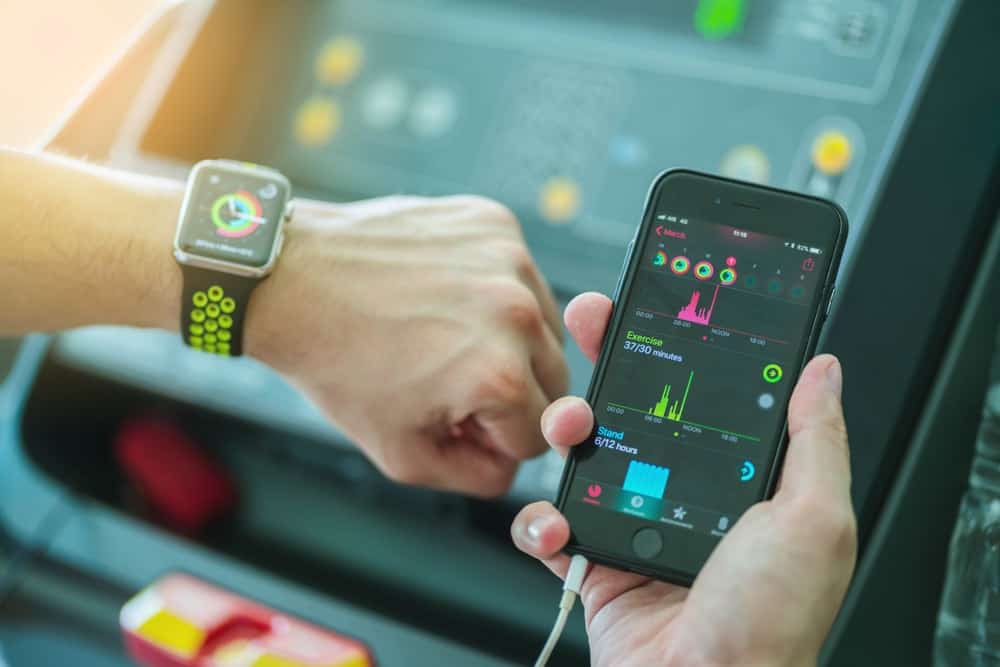
Caveat: iPhone users should stick to the Apple Watch
Apple iPhone users should just get an Apple Watch. If you aren’t going to buy a Garmin Fenix 6, then get an Apple Watch or get nothing.
The reason for this is because some functionality isn’t unavailable if you are not using an Apple Watch.
For example, you can’t reply to texts on the Garmin Fenix 6 nor the Fitbit Versa 2 if you are paired to the iPhone. The Garmin Fenix 6 is a superior fitness and exercise watch, so this sacrifice makes sense.
Only the Apple Watch allows you to do that. It also has a good suite of fitness and exercise tools that couples with the Activity and Health apps on the smartphone. It also has an integrated GPS and is water resistant enough for swims.
Oh, did I also tell you that it has an LTE version? Meaning you could completely ditch your phone at home.
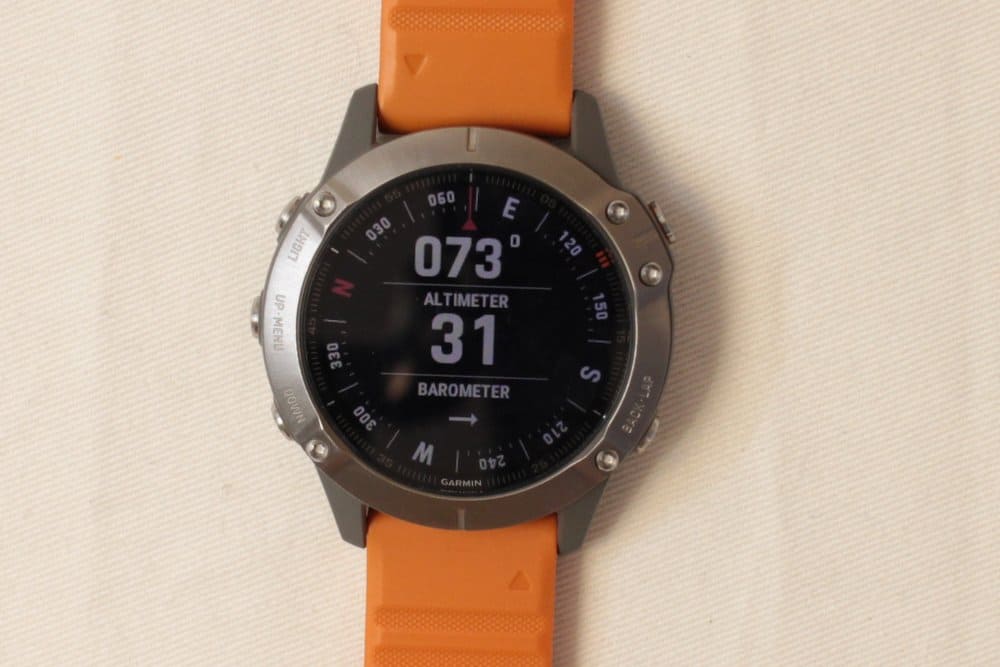
Conclusion
If you want the ultimate sports smartwatch, you need to be prepared for some sacrifices. No replying to texts, no phone calls, no voice assistant, no touchscreen and no speaker.
But in return, the Garmin Fenix 6 gives you a suite of excellent data analyzers, great battery life and training regimes you can sign up for.
Most folks will not need such a specialized watch, which is why you could consider the Fitbit Versa 2 if you want a smartwatch with some ability to help you in day-to-day tasks.
And if you need an in-between, consider the Suunto 7 which has a good balance of productivity features and sports features.
But yeah, Apple users, just stick to the Apple Watch if you want a general purpose watch with great fitness and exercise features.



